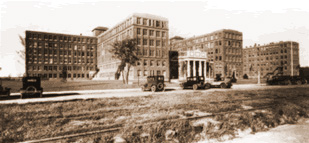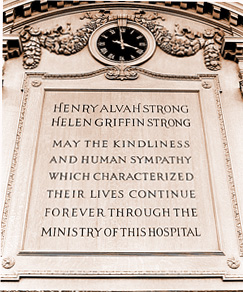History of the University of Rochester Medical Center
In 1910, Abraham Flexner, under the auspices of the Carnegie Foundation for the Advancement of Teaching, published a report on medical schools that led to a revolution in how medicine was taught across the country.
By 1920, Flexner approached Dr. Benjamin Rush Rhees, then president of the University of Rochester, with the idea of establishing a medical school at the university that would utilize his revolutionary ideals in medical education. Flexner and Rhees then approached George Eastman, founder of Eastman Kodak, to help back the idea financially. Additional monies came from the General Education Board of the Rockefeller Foundation and the daughters of the late Henry Alvah Strong, former business partner to George Eastman, to build a university, medical school, and hospital on land located on the southern boundaries of the City of Rochester near the banks of the Genesee River.

The URMC was founded in 1921, and George Hoyt Whipple was recruited from the University of California at San Francisco to become the first dean of the School of Medicine and Dentistry. Whipple helped shape the school from its inception, hiring faculty and staff and supervising the design and construction of buildings. The medical school opened in 1925 and Strong Memorial Hospital opened its doors as a 250-bed community facility. The University of Rochester School of Medicine & Dentistry graduated its first class in 1929.

This room served as the Strong Memorial Hospital lobby from 1926 until the opening of the new hospital in 1975. The lobby fell into disuse until it was incorporated into the Edward G. Miner Library as its reading room during an extensive renovation in 1987.

This plaque was dedicated to Henry Alvah and Helen Griffin Strong and is located in the former Strong Memorial Hospital lobby. It reads, "May the kindliness and human sympathy which characterized their lives continue forever through the ministry of this hospital."